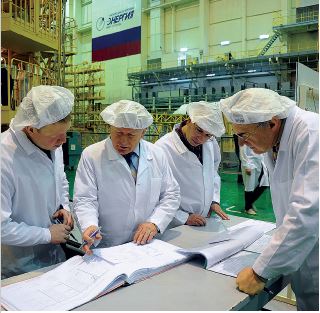Singapore
2019 TSRQ3 – Education STEM Proficiency


The science, technology, engineering, and mathematics (STEM) workforce is at the core of the space industry—from the mathematicians and astronomers who analyze space to the engineers who design and build the launch vehicles that get us there. This workforce is enabled . . .
2019 TSRQ2 – Workforce: Domestic and International Space Industry Employment


The global space industry employs hundreds of thousands of highly skilled individuals to design, produce, and operate cutting-edge technology. This dynamic workforce contributes to local economies, with clusters of innovative companies and service . . .
2015 – Surface Imaging – Snapshot
The number of surface imaging satellites launched continued to grow in 2015. The sub-category dominated the greater category of Earth observation and remote sensing satellites launched in 2015, taking a nearly 72% share. The majority of surface imaging satellites literally provide a picture of Earth, and changes upon its surface, at any given time, using electronic and optical imaging payloads.
2015 – Meteorology – Snapshot
Weather and environmental satellites help humans understand and predict the atmospheric conditions of the Earth. National governments traditionally run these constellations, providing data for weather forecasting, climate modeling, and more. Weather agencies also provide data about life-threatening storms to other nations, increasing the ability of those nations to evacuate areas predicted to be hit by the storms. Slightly less than 4% of all spacecraft launched in 2015 had a meteorological or environmental mission.
2010 – Bigelow Space Stations – Snapshot
Bigelow Aerospace has been working for several years to develop commercial orbital habitats using expandable modules. This approach, leveraging technology licensed from NASA, involves launching modules in a compact form and inflating them once in orbit, creating much larger volumes than would be possible with traditional metallic structures.
2008 – TIMSS
To gauge how U.S. elementary and middle school students compare with other students in math and science, the results of a test administered by the U.S. Department of Education, known as Trends in International Mathematics and Science Study (TIMSS) provide a standardized global measure. The most recent test was administered in 2007.
2008 – Spaceports – Snapshot
Spaceports operate around the world, offering different capabilities and scales of operation. Some spaceports consist of little more than a basic control center, transportation infrastructure, and launch platform. Others are more elaborate, with facilities for payload processing and integration as well as state-of-the-art mission operation centers.
Transoceanic Flights with High-speed Internet
Satellite communications are enabling new comforts for long-distance commuters and airline customers. JetBlue, Singapore Airlines, and Virgin Blue of Australia are among the airlines that offer satellite TV.